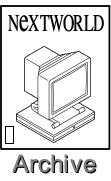 |  |  |  |  |  |  |
| | | | |

|

|
|
| |
December 1991 |
|
 |
|

|
 |
OOP vendors prep for battle
by Simson L. Garfinkel
New York: If the recent Unix Expo was any indication, the industry's premier operating system vendors are gearing up for a battle royale over object-oriented technology.
In a keynote address that ran 45 minutes over schedule, NeXT CEO Steve Jobs asserted that commercial users are buying UNIX workstations to develop "mission-critical custom applications" that are beyond the scope of what is possible on Macintosh or MS-DOS computers. These companies are now discovering that object-oriented programming can reduce the time it takes to develop such a program from two years to just 90 days, he said.
The proven power of object-oriented programming explains why companies like Apple and IBM are now trying to develop new object-oriented operating systems, said Jobs. "The problem is that it takes five to six years to develop a new system," he said. "I saw Microsoft try to copy the Macintosh. It took them eight years."
But when asked why companies desiring object-oriented systems shouldn't just use NeXTstep today, Bill Filip, president of IBM's advanced workstation division, attacked NeXT's technology as not being truly object-oriented.
"NeXTstep is implemented as a layered-object technology approach; it's the same approach as OS/2 and System 7," Filip said. "Pink is a ground-zero object structure. We believe it will be more productive by optimizing object technology down to the microkernel. . . . The [Pink] kernel is object-oriented. Today, no kernel is an object."
In another press conference a few hours later, Jobs responded: "Sometimes, technical people don't understand the depth of what they are talking about. NeXTstep uses Mach. It's a full object-oriented system."
NeXTstep has at least one leg up over Taligent, the company formed by IBM and Apple to offer an object-oriented environment: availability. Apple Computer President Michael Spindler said that the company would not be showing its object-oriented Pink operating system until 1992 Ð and then only to select, undisclosed customers.
"We will show Pink when System 7 is [moved] to RISC," said Spindler, referring to the company's plans to port its System 7 operating system to the new Power-PC RISC microprocessor currently under joint development by IBM and Motorola.
Within the next two years, Taligent will make part of its object-oriented system available "in a layered form, to enhance existing products," Filip said.
|
|